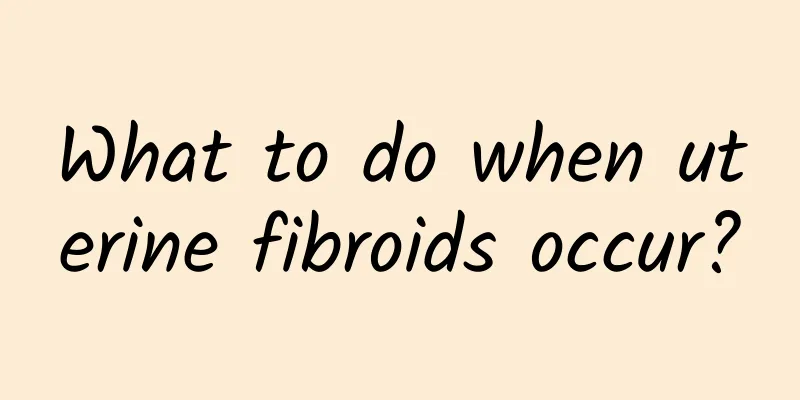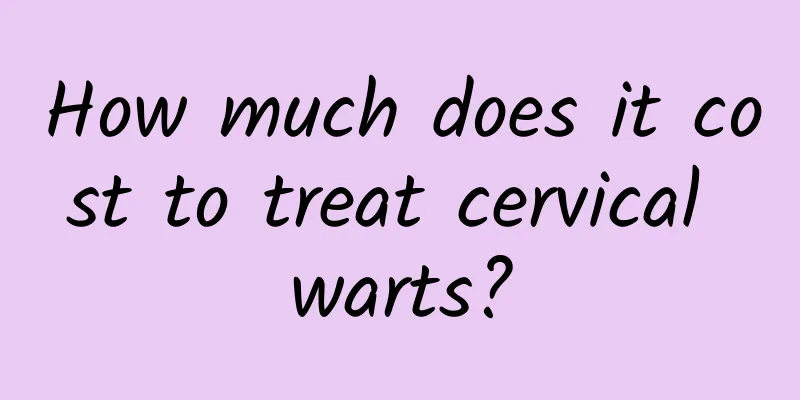What to do when uterine fibroids occur?

|
What should you do when uterine fibroids occur? Uterine fibroids are one of the most common tumors in the human body and the most common benign tumor in the female reproductive organs. They are also called fibroids, uterine fibroids, and uterine leiomyoma. They cause great harm to patients. So, what should you do when uterine fibroids occur? The following is a detailed introduction for you. 1. Hormone drugs: According to the specific situation of the patient, pseudo-pregnancy therapy can be used for periodic or continuous treatment to degenerate and soften the fibroids. However, it can cause tumor enlargement and irregular uterine bleeding, so it is not suitable for long-term use. Moreover, hormones have great side effects on female patients (coarsening of the voice, vigorous growth of sweat hair, obesity, strong dependence, etc.), long medication cycle, and high drug prices, which are feared by most patients. 2. Radiotherapy: It is suitable for patients who are ineffective with drug treatment and have contraindications to surgical treatment or refuse surgical treatment. However, radiotherapy kills normal tissue cells while killing fibroid cells. In addition, radiotherapy can cause temporary or permanent amenorrhea. It is not suitable for young patients under 40 years old, patients with inflammatory symptoms, patients with large uterine fibroids, patients with cancer, and pregnant patients. 3. Clinical surgery: Surgical treatment of uterine fibroids includes myomectomy and hysterectomy, which can be performed through the abdomen or vagina, or endoscopic surgery (hysteroscopy or laparoscopy). The choice of surgical procedure and surgical approach depends on factors such as the patient's age, whether she has fertility requirements, the size and location of the fibroids, and medical technology conditions. 4. Interventional therapy: Interventional treatment of uterine fibroids only requires puncturing the femoral artery at the thigh root, and then using a 1.5mm catheter to perform super-selective embolization of the uterine artery, leaving only a small incision of about 1~2mm after treatment. Therefore, the trauma is minimal, the risk is very low, and there is no scar after the operation, which is more suitable for patients with uterine fibroids who have high cosmetic requirements. The above is a detailed introduction to "What should I do when uterine fibroids occur?" I hope it will be helpful to everyone. There are so many treatments for uterine fibroids now. As long as patients can actively accept diagnosis and treatment and adhere to treatment, the patient's condition can be effectively alleviated. |
<<: How to treat uterine fibroids
>>: How to prevent uterine fibroids?
Recommend
What tests can confirm cervical erosion? 5 methods of checking cervical erosion
Cervical erosion is one of the most common gyneco...
Expert introduction: The impact of uterine fibroids on fertility
Regarding the impact of uterine fibroids, patient...
Several major hazards of cervical precancerous lesions
The harm of cervicitis to patients, in addition t...
Drink 7 slimming soups to reduce internal heat and dryness in autumn
[Key points]: Autumn is dry, so drinking soup to ...
How to diagnose early cervical precancerous lesions
Many female friends have suffered from cervical d...
Is it good to have an abortion in three months of pregnancy?
Abortion in the third month of pregnancy requires...
Precautions after cervical erosion surgery
Precautions after cervical erosion surgery: 1. Ha...
Worried about your bra cup size shrinking after losing weight? 5 ways to successfully recover
Everyone knows that if you want to have MOMUCHAN ...
How can office workers prevent adnexitis?
Adnexitis mainly refers to inflammation of the ov...
Magnesium has 6 major benefits in improving insomnia and relieving stress! Nutritionist: 6 natural foods that contain magnesium and can be consumed more
Only with enough "magnesium" can you ha...
How much does it cost to treat ovarian cysts? How to treat ovarian cysts?
How much does it cost to treat ovarian cysts? How...
Can I still have children if I have vulvar leukoplakia?
Can you still have children if you have vulvar le...
Patients with ectopic pregnancy usually experience vaginal bleeding
Patients with ectopic pregnancy generally experie...
What should you not eat during menstruation? Five foods you should not eat too much
Girls must pay attention to diet during menstruat...
More than half of middle and high school students are addicted to sweet drinks and drink them more than 4 days a week
The habit of craving for sweet drinks is very com...









